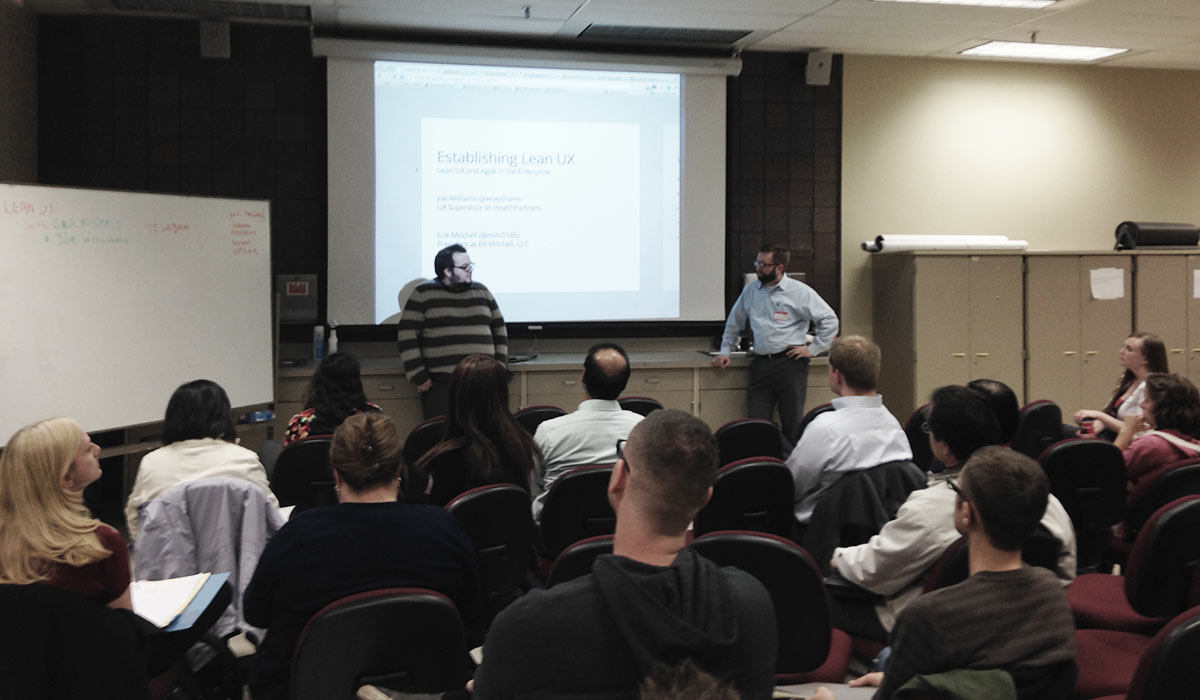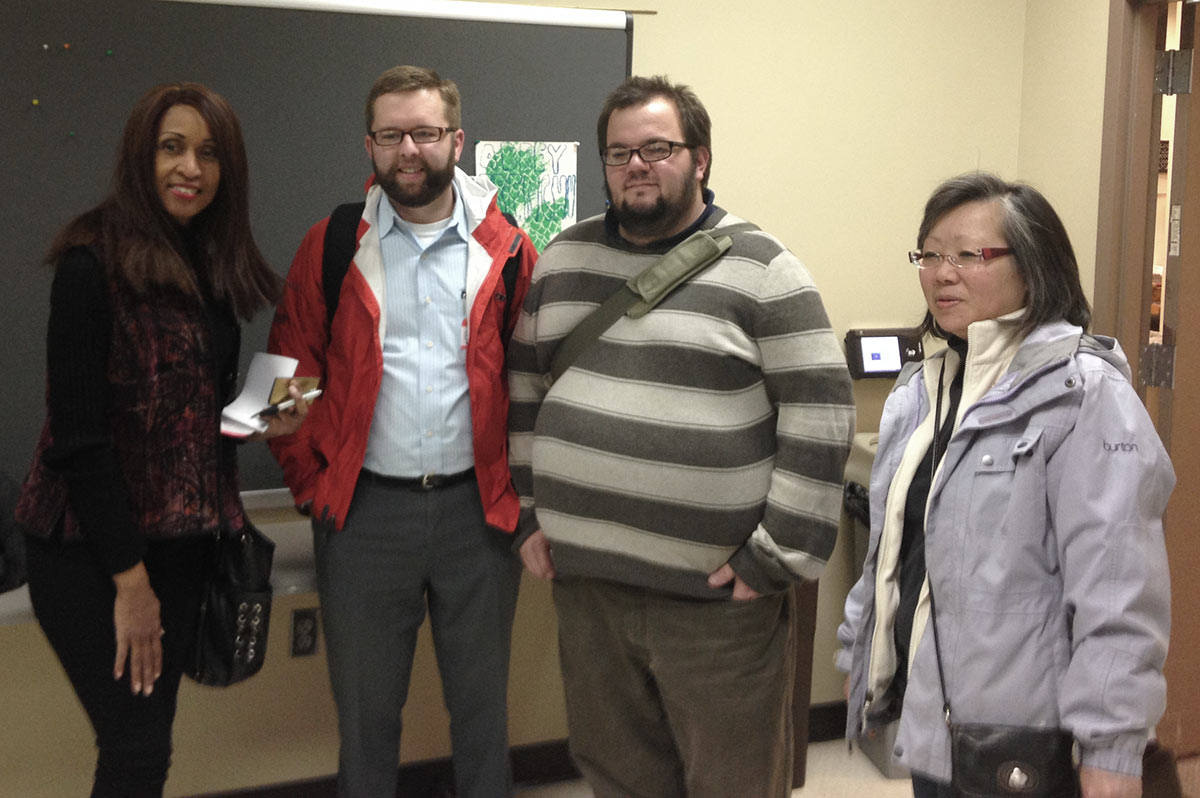October 23, 2013
Lean UX In The Enterprise
Yesterday, we had the honor to have two experts in combining technology and design come and talk to our meetup group at the MCTC about Lean UX: Erik Mitchell and Joe Williams .

Erik Mitchell (on the right) and Joe Williams (on the left) beginning to speak about Lean UX.
One interesting thing, at least for me, was how well they work together, and I believe it’s a result of understanding and applying Lean UX to their process on a daily basis. Before the session began, Erik, a former colleague of mine at Bestbuy.com, and I spent a few minutes talking about Lean UX and most of the time he mentioned his partner in crime, Joe Williams, giving him credit for what they’ve accomplished together. I think that the fluidity in which they work together has also set themselves for great accomplishments in the corporate world.
Joe started off by explaining what UX Design and lean principles are, then Erik joined to chat about how to put the two together. Erik went in details of how to integrate agile software development with design and then they talked about how they’ve done it at HealthPartners.
“There’s always tension between design and technology. Lean UX is about achieving more with less.” Erik Mitchell
Truth be told, if you’ve worked for any big corporation chances are you have seen this tension in person, which often bogs down work, delays launching products, pisses people off, and the fullfilment that comes with seeing a product you worked on lauching evaporates. This tension endeds up causing detriment to the user experience, which affects the bottom line of the company.
One way that they addressed this tension was by having a more collaborative workflow — cutting the fat — between designers and developers at HealthPartners. “Everyone owns everything” Joe said. “There’s no one team owning design; everyone owns design and we welcome everyone involved in the product development (product managers, designers, developers, stakeholders) to take ownership of the entire process and possible problems.”
Having read The Lean Startup by Eric Ries and UX for Lean Startups by Laura Klein and being an advocate myself, last night’s talk aligned well with how startups in the Valley and across the country are applying these principles to validate the problem, market, and product. Two startups that come to mind are Intercom and YesGraph. They are very outspoken about their process and engage readers to share their opinions/experiences in the comment section. (I strongly recommend reading their blogs.)
“It’s also about getting everyone involved to design the best solutions for our customers. It’s our job to be an advocate for our customers.” Joe Williams
One thing that I’ve heard a lot in blogs, Twitter and corporations is the confusion that exists between Lean UX and UCD. Although Lean UX inherits a lot from UCD, Lean UX is not the same thing as UCD. UCD doesn’t have/use strong opinions on frequent iteration, validating hypothesis and agile methodologies.
The biggest takeway for me is that we, designers and developers, need work together collaboratively, let go of our passion for pixel-perfect designs or bug-free algorithm, and focus on the user by validating the problem, idea and market. If there’s no users using your product, it doesn’t really matter how badass your app is.

A Pose for a picture with attendants after the presentation.
Lastly, our Minnesota Web Design Group is growing with nearly 1,000 members and we, organizers, are very excited about where we’re at today. When we started we were only a few members and four organizers with a group doomed for failure. Today, we’re growing strong and have plans to make our group even bigger not only in size but in content as well. Without each one of you, we wouldn’t be able to talk about what we love the most: technology and design. A big thanks to our members and bigger thanks goes to Minneapolis Community and Technical College for supporting us throughout these years.
You’re not a member yet? Click here to become a member and be part of a very exciting group.
Thoughts on Straight Shot
DisclaimerIf there is ever any doubt, the views expressed here have nothing to do with those of my employer. read more
Even though I work for Target Corp, the views expressed here are my personal views and do not necessarily reflect the thoughts, opinions, intentions, plans or strategies of my employer.
And some legalalize:
All of my online communications are provided “as is” with no warranties or indemnities of any kind, and do not confer any rights. My employer is not responsible for the accuracy of any of my online communications.
You should know that I have no ability to bind my employer to any legal obligations. By way of example, I have no authority to grant or confer any right or license, either express, implied or by estoppel, under any patent, copyright, trade secret or other rights of my employer. If you would like a license to any intellectual property or other rights of my employer, you must enter into a written contract directly with it.

